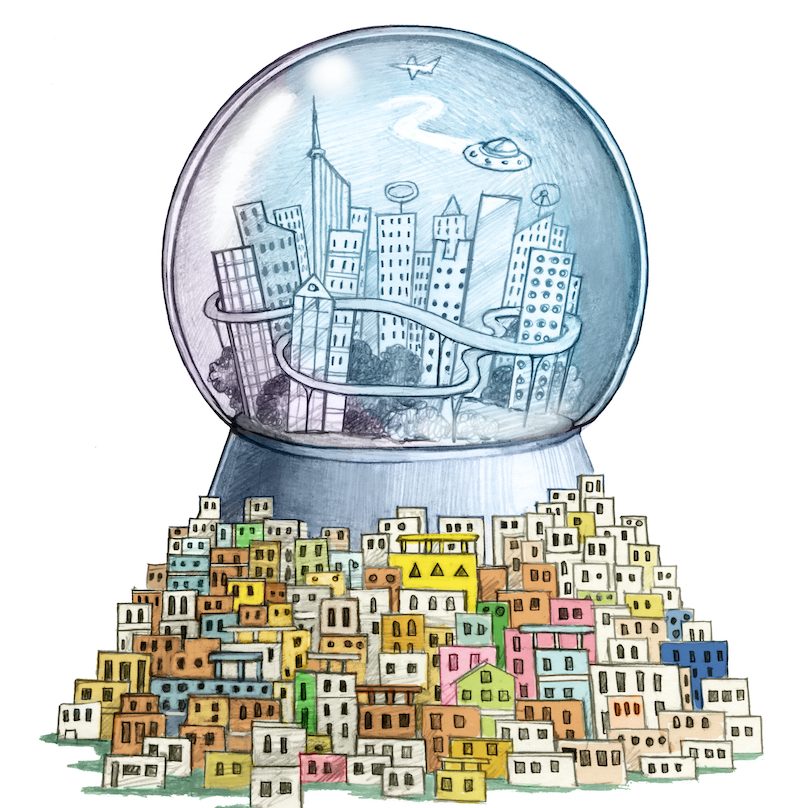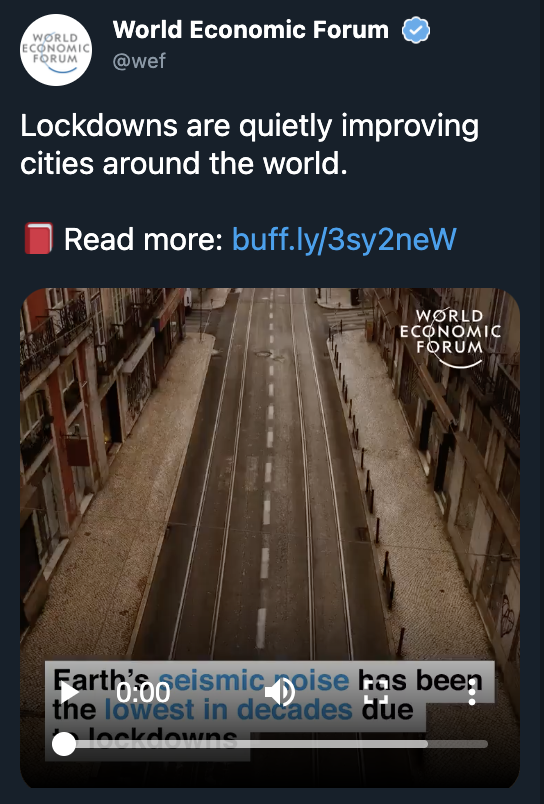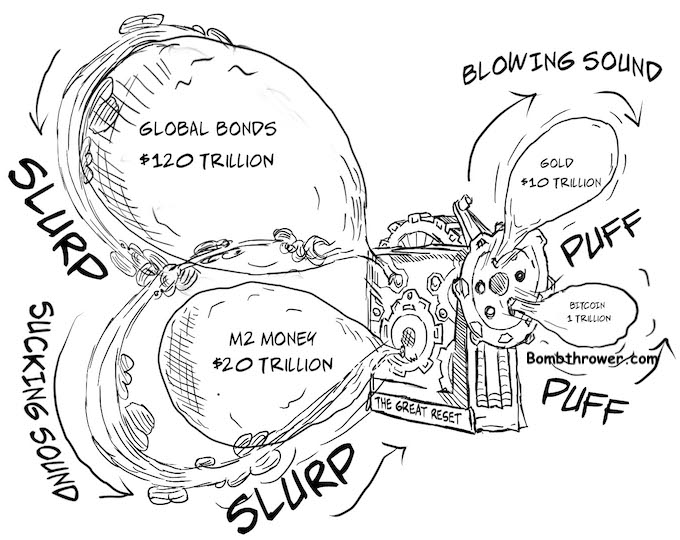
I’ve been hearing the phrase “Everything Bubble” come up more often lately. This isn’t a new phrase, Graham Summers was among the first to coin it in his 2017 book “The Everything Bubble: The Endgame for Central Bank Policy”:
“The Everything Bubble chronicles the creation and evolution of the US financial system, starting with the founding of the US Federal Reserve in 1913 and leading up to the present era of serial bubbles: the Tech Bubble of the ‘90s, the Housing Bubble of the early ‘00s and the current bubble in US sovereign bonds, which are also called Treasuries.
Because these bonds serve as the foundation of our current financial system, when they are in a bubble, it means that all risk assets (truly EVERYTHING), are in a bubble, hence our title, The Everything Bubble. In this sense, the Everything Bubble represents the proverbial end game for central bank policy: the final speculative frenzy induced by Federal Reserve overreach.”
Most recently the idea of the Everything Bubble came up on Coindesk’s Breakdown with NLW edition about NFT’s and the record setting sale of Beeple’s The First Five Thousand Days for $69 million USD. I say this as a guy who has been into crypto since 2013 and is getting even more involved today: I don’t get NFTs. Or rather, it only makes sense why they’re selling for such excessive valuations when you consider it to be a phenomenon occurring within the dynamics of an Everything Bubble.
Endgame is another theme asserting itself, that’s what Grant Williams and Bill Fleckenstein call their podcast (it recently went premium, but the first bunch of episodes are widely available across all major platforms). In Grant Williams’ February newsletter (“Let Them Eat Risk”), he afforded a lot of coverage to Bitcoin, including a piece by Ray Dalio and Rana Faroohar’s “Bitcoin’s Rise Reflects America’s Decline” (originally an op ed for the Financial Times).
What struck me about her piece, and to a similar extent, Dalio’s, was this recognition that even if they hadn’t themselves embraced the idea of crypto, it would be a mistake to dismiss crypto-currencies as merely a speculative bubble. Said differently, even Bitcoin skeptics are beginning to understand that Bitcoin’s rise means something. It portends a shift. A big one:
“A little over 100 years ago, there was a bubble asset that rose and fell wildly over the course of a decade. People who held it would have lost 100 per cent of their money five different times. They would have, at various points, made huge fortunes, or seen the value of their asset destroyed by hyperinflation.
The asset I’m referring to is gold priced in Weimar marks. If this reminds you of bitcoin, you are not alone. In his newsletter Tree Rings, analyst Luke Gromen looked at the startling similarities in the volatility of gold in Weimar Germany and bitcoin today. His conclusion? Bitcoin isn’t so much a bubble as “the last functioning fire alarm” warning us of some very big geopolitical changes ahead.” (emphasis added)
The entire piece is quite good and I recommend reading it, she concludes:
“None of this makes me want to buy bitcoin. But I also don’t see it as a normal bubble. It was unclear at the beginning of the 20th century which of the hundreds of automakers would win the race to replace the horse and buggy. Now, who knows whether bitcoin, ethereum, or diem, or some yet-to-be-invented digital currency will win out long term. For now, the bitcoin boom may best be viewed as a canary in the coal mine…”
This resonated with me and reminded me of a comment left on my “This Time is Different: What Bitcoin Isn’t“ piece when it ran on Zerohedge back in 2017 (the ZH copy is behind their premium archive now).
“Bitcoin is a hole …in a burning building
I had the thought that Bitcoin is like a hole in the wall of a burning building. The burning building is the petrodollar. The Bitcoin hole in the wall doesn’t meet any standard definition of a door. It wouldn’t pass a building inspection and it may not last long. It will most certainly be replaced by something else in the long run. But in the short term, no one inside that burning building really cares about any of that and the ones that first smelled smoke are already pouring through it. Many more will follow and some, sadly, will die in the fire. There are other exits from the building too, some may be safer than others, but the most important thing is getting out of the burning building as quickly as possible.”
I’ve been pulling together numerous threads so far from disparate sources, many of whom are Bitcoin and crypto-currency skeptics, all of whom are people I think are worth following anyway because they’re super smart and put out extremely high signal content.
The last one I’ll pull in is where the title for today’s post came from. I heard Diego Parrilla say this phrase on the Macro Voices podcast, in an almost off-the-cuff manner. My brain did a sort of physical convulsion that is hard to describe but has only happened maybe a half-dozen times in my life. Maybe that’s where the expression “mind blown” originates.
He said “we’re in an everything bubble that’s too big to fail”.
It’s not an institution, it’s not an asset class, it’s not a political ideology, a social media platform or a monetary regime. It is everything.
When you consider that, it explains why policy makers are behaving in the way they are. We’ve painted ourselves not into a corner, but into a bubble. There are no soft-landing scenarios out of which we can extricate ourselves from this bubble, and under no circumstances can this bubble be allowed to deflate, let alone pop.
I’ve been treating the rise of Bitcoin and gold as a flight out of fiat for some time. I’ve known that policy makers were motivated to keep the system on the rails for as long as humanly possible. None of this is new to me. But what really got me was that particular phrasing all of us being in a bubble that’s too big to fail.
It means in all of the language and trial balloons around The New Normal, the Great Reset, Build Back Better, the backdrop of desperation that seems to permeate it came into clearer focus for me.
Some kind of Great Reset is, in policy makers’ minds, the only way forward to get out of The Bubble. I looks like they want to do it in a way in which they get to keep living like they’re inside The Bubble and still run the show, while everybody else has to get used to living life under a drastically reduced standard of living and submit to rapidly emerging social credit systems.
In other words, it almost looks like the plan to softly deflate The Bubble is to kick everybody who isn’t part of the establishment elite and its support systems, out of it.

It’s The Great Bifurcation, pulled forward about 20 or 50 years by a virus that would have otherwise been somewhere between a nothingburger and SARS…
“Even in the worst-case horrendous scenario, COVID-19 will kill far fewer people than the Great Plagues, including the Black Deaths, or World War II did… [but] changes that would have seemed inconceivable before the pandemic struck, such as new forms of monetary policy like helicopter money (already a given), the reconsideration/recalibration of some of our social priorities and augmented search for the common good as a policy objective, the notion of fairness acquiring political potency, radical welfare and taxation measures, and drastic geopolitical realignments.
The broader point is this: the possibilities for change and the resulting new order are now unlimited and only bound by our imagination, for better or for worse. “
— Klaus Schwab, experiencing near-fatal orgasm whilst pontificating in his COVID-19: The Great Reset
The escape valves from The Everything Bubble
But there are escape valves from The Everything Bubble, ones that can be used by normal everyday people who aren’t elites, who don’t get invited to Davos every year to “reimagine” everybody else’s lives, who don’t take private jets to work, who just want to be able to mind their own business, live their own lives and preserve the wealth they’ve worked hard and fairly to build up over their lives.

Those valves are to move out of the fiat money system and into “stuff” like commodities, real estate, agriculture, like gold and precious metals. And crypto. This is why all of these things are blasting off (Gold is less than 20% off of its all time highs. Crypto can dump more than that overnight. These two asset classes are not mutually exclusive, they are just on different wavelengths).
To receive future posts in your mailbox join the Bombthrower mailing list or follow me on Twitter.
Announcement: On March 17th the Crypto Capitalist Letter will launch. The focus is on navigating the New Normal with a focus on actionable items lincluding investing in crypto stocks.


Get into these real assets while you can, commodities because everyone needs them, real estate because they are never going to make anymore, and things that will keep you fed, warm, and safe. With these you can survive the Great Reset. Anything else is gravy. Crypto may be part of that, but I really have no idea. I really think the plan is to cull the population, but I'm just a guy who sometimes thinks too much.
I have read fairly convincing documentation that the gold market is completely manipulated. My concern is that the bitcoin market would be even more susceptible to manipulation. What are your thoughts?
After reading your excellent articles (as recommended by SK Bannon) am think the way forward for us grundoons is to put my retirement pot into quality property (this is in UK) ?